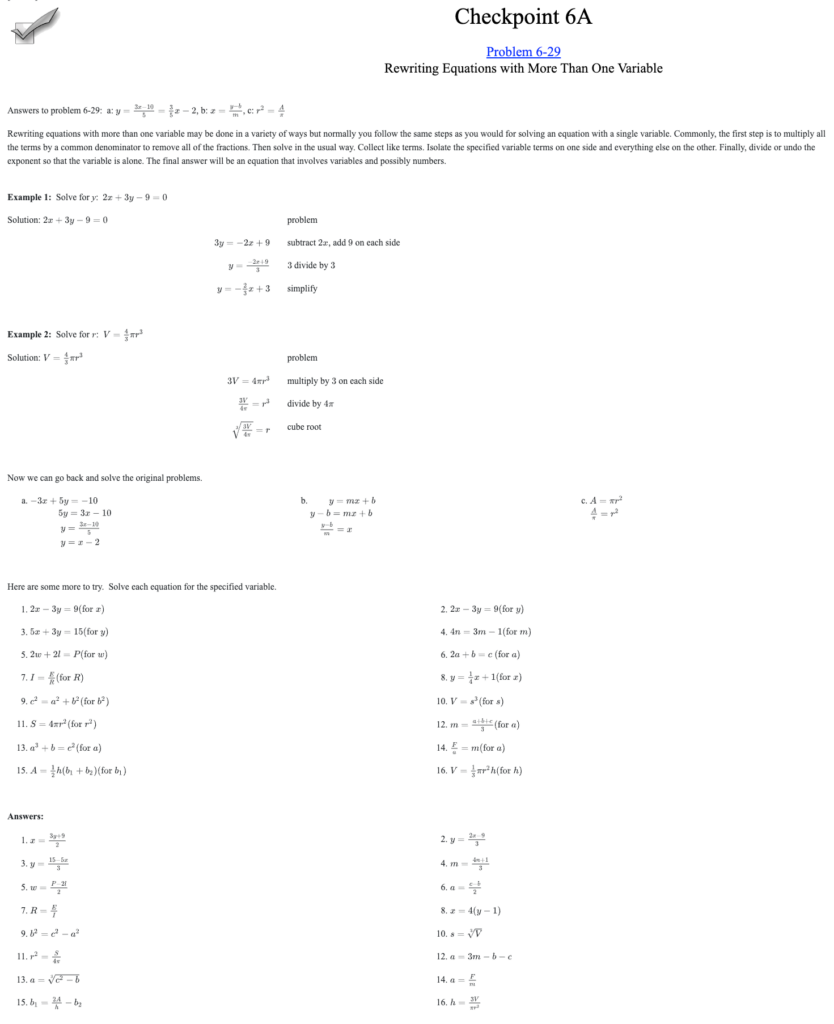Sharon Rendon, Director of Professional Learning, sharonrendon@cpm.org
It seems like school years continue to go by faster and faster. It is already March and many of you are about to turn the corner, entering the fourth quarter of the year. Now is a great time to take some time to reflect and consider the opportunities you are providing for students to make sense of mathematics.
If you are in your first year of implementing, you are probably just now seeing the beauty of the connections and the learning over time that is happening with students. And those of you in your second year or beyond continue to see the beauty of mathematics unfold over time. I remember the first year I started teaching I was thrilled when my student arrived at the factoring quadratics section and they could see many of the previous concepts connected.
This year the professional learning department has made a concentrated effort to use the Implementation Progress Tool to provide some language and descriptors during support visits. However, this tool is also useful beyond the first few years of implementation. Many of you have not had the opportunity this year to engage with this document, and you may not be aware of this tool or the ways in which it could be used.
The tool is aligned with the three pillars behind CPM’s design. The first section describes the foundational idea of the pillars. The second and third sections provide powerful opportunities for reflection. Section two focuses on student learning. Think about your lessons this past week and identify where your students are having success. What evidence are your students providing of high quality learning? You might also consider the areas your students need more support or structure to be successful in their learning. Maybe you and your colleagues could identify a goal that you work on collectively.
Section Two: Features of desired student learning when the pillars are in place.
| Collaborative Learning | Problem-Based Learning | Mixed, Spaced Practice |
|---|---|---|
| Students read and make sense of problems together. | Student thinking at varied depths of conceptual understanding are openly shared and valued. | Student work through lessons at an appropriate pace. |
| Students are able to listen to the ideas of others and communicate their own ideas both in teams and during whole class discussions. | Students demonstrate and value both conceptual and procedural knowledge. | Students understand that mastery takes time, effort, and support. |
| Students listen carefully to the thinking of others and respond with clarifying questions or extensions of their own. | Students look for, compare, and connect multiple models and solutions strategies. | Students are aware of learning targets and periodically self-assess their progress towards those targets. |
| Students engage in productive mathematical discourse, justifying answers, creating viable arguments, and critiquing the reasoning of others. | Students recognize that incorrect work cn be a stepping stone to learning and are wiling to share and investigate their thinking. | Students solidify learning as they work on Review & Preview problem sets daily as intended. |
The third section provides some language about teacher actions. The language included in these descriptions is similar to the eight teaching practices found in the book Principles to Actions, published in 2014 from the National Council of Teachers of Mathematics. Use this tool to identify a goal for the fourth quarter of the school year and put some action items into practice. If you have not read the publication, put this book on your summer reading list.
Section Three: Instructional strategies evident when the pillars are in place.
| Collaborative Learning | Problem-Based Learning | Mixed, Spaced Practice |
|---|---|---|
| Teachers creat an environment of collaboration and consistently provide feedback on studens’ progress towards effective collaboration. | Teachers us the lesson launch to connect to prior learning and clearly communicate the learning target. | Teachers plan and pace lessons as intended, based on a thorough understanding of the learning progression of each chapter and the course as a whole. |
| Teachers use a variety if classroom modes (whole group, study team, partner, individual) at appropriate times within each lesson. | Teachers circulate purposefully to interact with all teams, monitoring and questioning the thinking of students. | Teachers anticipate common misconceptions and consider varied levels of understanding to differentiate and move all students towards stated learning targets. |
| Teachers use Study Team and Teaching Strategies (STTS) and Team Roles with purpose. | Teachers use questioning to uncover student thinking, and then provide opportunities for that thinking to be shared. | Teachers provide timely feedback on student practice of previously introduced skills and on beginning understandings of developing concepts. |
| Teachers hold students individually accountable within the team environment. | Teachers formatively assess student needs and take appropriate action to support accessibility. | Teacher elicit students’ informal ideas and leverage them towards developing formal mathematical vocabulary and procedures at appropriated times in the course, |
| Teachers are aware of and take status issues into consideration when managing teamwork, | Teachers design and facilitate lesson closure that provides opportunities for students to make connections between various solutions and key mathematical ideas. | Teachers use varied assessments that are based on mastery over time and assess both conceptual and procedural knowledge. |
Don’t wait any longer or let any more of the school year go by without taking the time to reflect on the learning happening in your classroom. Gather a couple of colleagues and spend some time celebrating your successes and identifying some next steps.


